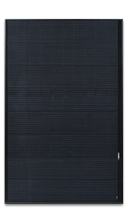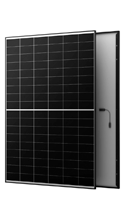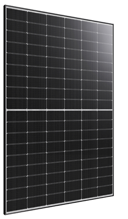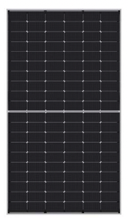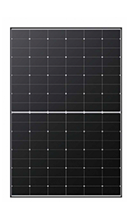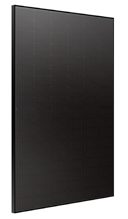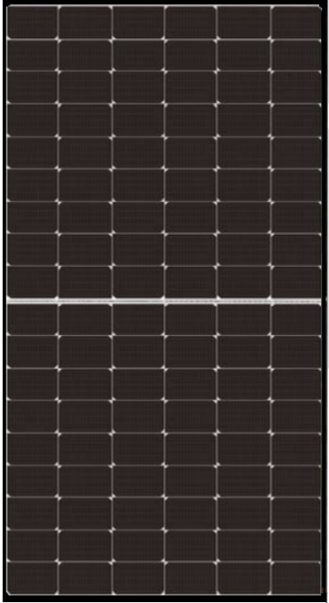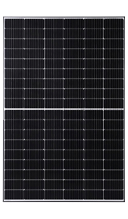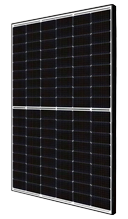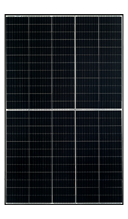How Long Do Solar Panels Last? Degradation Rates in 2025 Compared
Last Updated: 16th Jun 2025 Fact-checked by Ronald Brakels
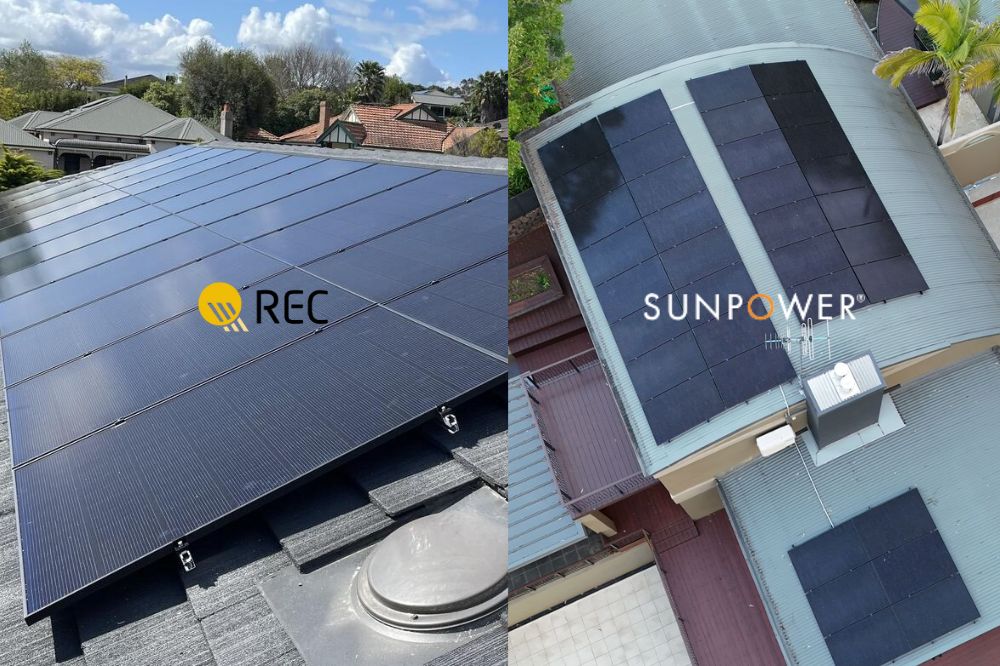
Solar panel degradation refers to the slow decline in panel performance over time. Put quality panels on your roof and you can expect them to last for decades with only minor losses in power output. Still, degradation matters — it affects your system’s lifetime energy yield and long-term savings.
Solar panels come with product warranties that cover defects (typically 25 years), and performance warranties that guarantee the panel won’t degrade faster than a specified degradation rate.
The table below shows how different brands compare on degradation rates and long-term output.
The Lowest Degradation Solar Panels in 2025
Here’s a table showing the maximum amount of degradation different panels’ performance warranties allow from year 2 onwards. The degradation rate is given as a percentage of the panel’s original capacity.
The very best panels only lose up to 0.25% per year, while the worst on the list only loses up to 0.55% per year.
Table of Contents
- The Lowest Degradation Solar Panels in 2025
- What Is A Good Degradation Rate for a Solar Panel?
- Year 1 vs. Years 2–25: Why the First Year’s Drop Is Bigger
- What Causes Solar Panel Degradation?
- Why Degradation Matters Over Time
- Are the Slowest-Degrading Panels Always the Best?
- Related Guides and Resources
What Is A Good Degradation Rate for a Solar Panel?
In 2025, if your panels are from a decent manufacturer, you can expect a warranted annual degradation rate of 0.4% or less.
While the maximum warranted loss for most panels now going on Australian roofs is 0.4%, you can do a little better by getting Aiko panels, which claim 0.35%, and if you’re willing to pay for a premium panel such as REC or SunPower Maxeon, they promise 0.25%.
Solar panel degradation is getting better all the time. Five years ago, 0.7% per year was typical.
Year 1 vs. Years 2–25: Why the First Year’s Drop Is Bigger
Panels’ performance warranties allow for a steeper output drop in their first year. This is usually either 1% or 2%, but for some panels it’s 1.5%.
This is mainly due to Light-Induced Degradation (LID), which affects panels during their first day or two in sunlight, but then stops. How bad it is depends on the type of panel.
- P-type panels, which were common but are now rare, typically allow 2% degradation in their first year to account for LID.
- N-type panels, which are now the most common, are mostly immune to LID and typically allow for 1% degradation in their first year or sometimes 1.5%.
So while a panel can take a small hit to output in its first year, you can expect the deterioration in subsequent years to be very gradual.
What Causes Solar Panel Degradation?
Being clamped to a rack on a roof and exposed to the elements is a tough life. Solar panels can expand and contract with changes in temperature, be flexed by wind, soaked by rain, and possibly pounded by hail. This results in the build-up of initially very minor damage over the years, which can include microcracks in solar cells and damage to solder joins. Both problems can reduce current flow. Well-made panels with lower rates of degradation are better able to resist these effects and so build up damage at a slower rate.
Why Degradation Matters Over Time
The losses build up and affect your system’s lifetime energy yield. If you choose a premium panel with a performance warranty that allows 1% degradation in the first year and 0.25% in subsequent years, and it degrades at the maximum allowed rate, it will have 92% of its original power output after 25 years.
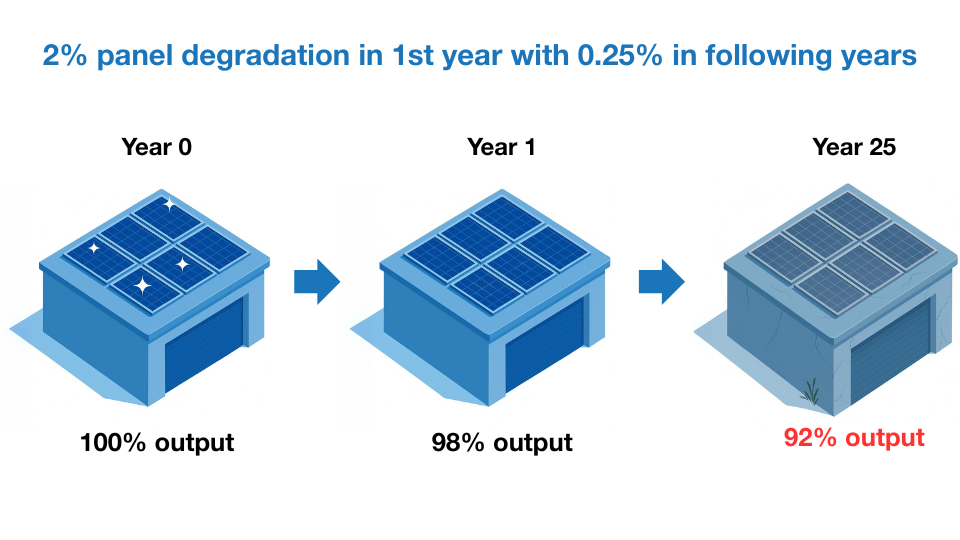
If you instead used a panel with a performance warranty that allows 2% degradation in the first year and 0.5% in subsequent years, and it degrades at the maximum allowed rate, it will have 86% of its maximum power output after 25 years.
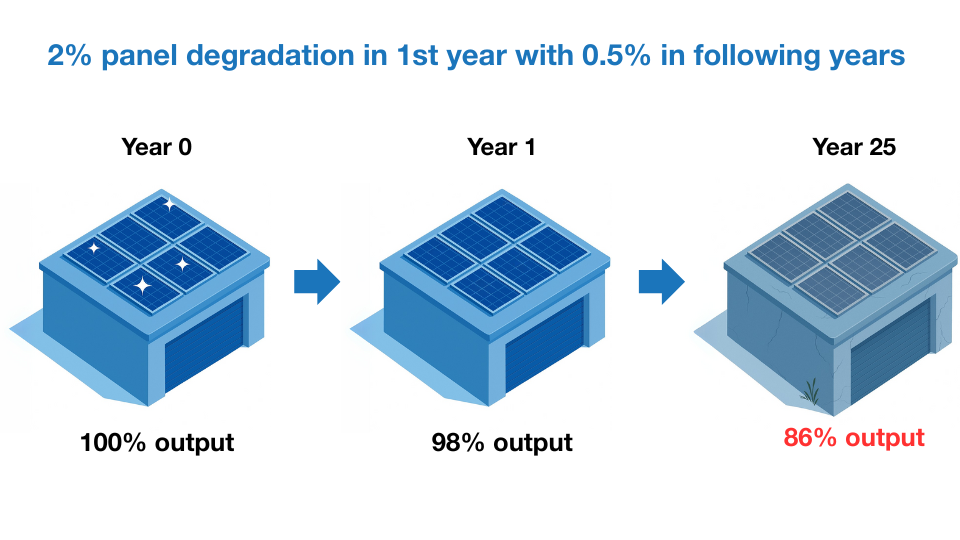
The increased rate of degradation results in the second panel producing 4.2% less energy over 25 years. Because the energy loss gets worse over time, half of it occurs after year 17.
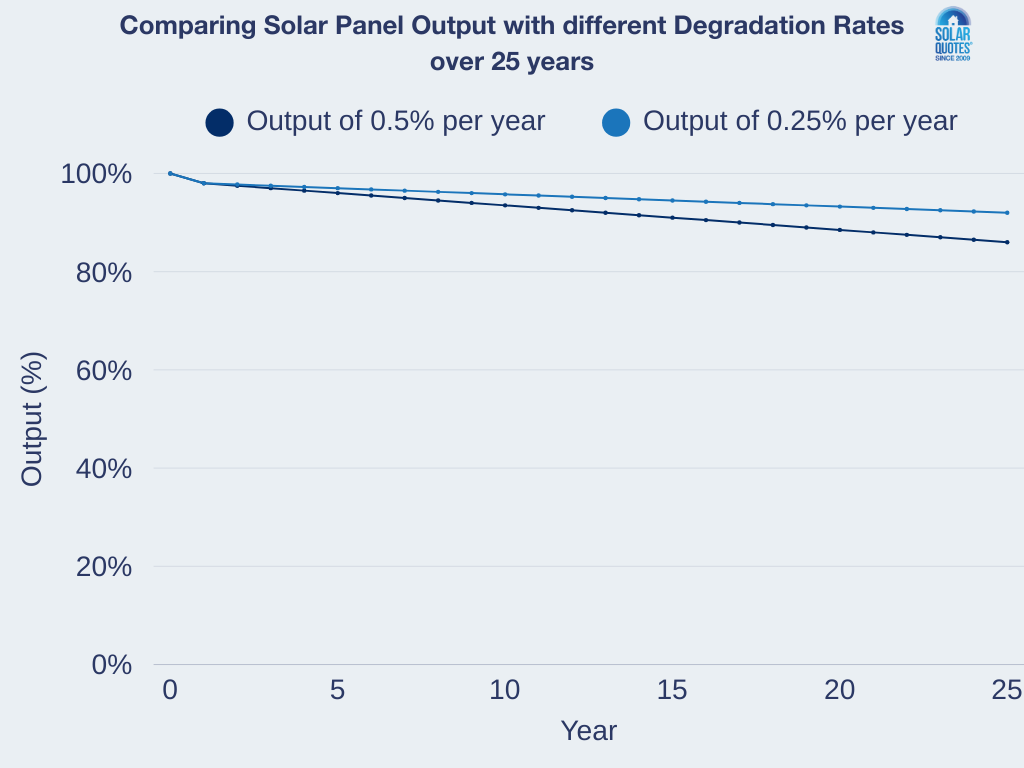
Because panels are unlikely to degrade at their maximum allowed rate, the second panel is more likely to produce roughly 3% less energy over 25 years. So while doubling the warranted degradation rate does make a difference, it doesn’t make a large one, especially over the first 10-15 years.
Are the Slowest-Degrading Panels Always the Best?
All else equal, the lower the warranted degradation rate, the better. But things aren’t always equal. If you want panels with the lowest warranted degradation rates, you’ll have to pay more for a REC or SunPower Maxeon panel, and you may not consider the modest expected improvement in energy production to be worth the extra cost.
How Much Can Slower-Degrading Panels Save You?
Let’s compare two 10 kW systems, one consisting of typical panels and one consisting of premium panels:
| Typical Panel | Premium Panel | |
|---|---|---|
| Degradation in year 1 | 2% | 1% |
| Degradation afterwards | 0.4% per year | 0.25% per year |
| Total energy over 25 years | ~340,000 kWh | ~350,000 kWh |
| Estimated savings | $34,000 | $35,000 |
In 25 years, the premium panel system saves you about $1,000. Because it takes time for the effects of degradation to build up, most of the savings occur later in the panel’s life:
| Years Passed | Cumulative Extra Savings (Premium vs. Typical) |
|---|---|
| year 5 | $95 |
| year 10 | $245 |
| year 15 | $450 |
| year 20 | $710 |
| year 25 | $1,020 |
| year 30 | $1,390 |
| year 35 | $1,810 |
| year 40 | $2,290 |
In the first 20 years, the premium panel system will only save you around $700 more in electricity savings than the typical panel system. However, in the next 20 years, they save an additional $1,600.
Note: I have assumed the maximum degradation that performance warranties allow, but most manufacturers include a safety buffer. Therefore, real-world degradation is likely less.
The takeaway
- If you’re only planning to stay in your home 10 years or less, premium panels are hard to justify on low degradation alone.
- If you’re in it for the long haul — or want a system that might still be working in 40 years — it’s worth considering the slowest-degrading panels from reputable brands.
Related Guides and Resources
- Solar Panel Comparison Table: Compare specs, prices, and warranties of Australian solar panels by degradation rate, efficiency, cost and more.
- Solar Panel Reviews: Independent reviews and customer ratings for dozens of panel brands available in Australia.
- Most Efficient Solar Panels in 2025: Learn about the highest efficiency panels on the market today.
- Best Solar Panels in 2025: Insights from Aussie installers on top panel brands for performance, reliability and value.
- Beginner’s Guide to Solar Panels : Everything you need to know about buying and installing solar panels in Australia.
